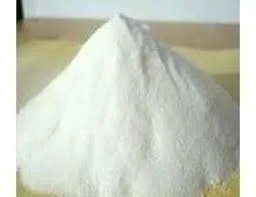
aug. . 14, 2024 04:59 Back to list
Hydroxyethyl Cellulose Applications in Paint Formulations for Improved Texture and Performance Enhancements
Hydroxyethyl Cellulose for Paint Enhancing Performance and Sustainability
Hydroxyethyl cellulose (HEC) is a non-ionic, water-soluble polymer derived from cellulose, a natural polymer obtained from plant cell walls. Due to its unique properties, HEC has become an invaluable ingredient in various industries, including the formulation of paints and coatings. Its ability to modify rheological characteristics, enhance stability, and improve overall performance makes it indispensable in contemporary paint formulations.
Hydroxyethyl Cellulose for Paint Enhancing Performance and Sustainability
In addition to its thickening capabilities, hydroxyethyl cellulose also plays a significant role in suspending pigments and other solid particles in the paint. This function is critical in preventing the settling of pigments, ensuring that paint remains homogenous throughout its shelf life. By maintaining an even distribution of particles, HEC contributes to the durability and longevity of the paint, preventing issues such as color fading or uneven texture over time. This makes paints formulated with HEC more reliable and appealing to consumers.
hydroxyethyl cellulose for paint

Another important aspect of HEC is its compatibility with a wide range of surfactants and other additives used in paint formulations. This versatility allows formulators to create water-based paints that are not only effective but also environmentally friendly. With growing concerns regarding the environmental impact of traditional solvent-based paints, HEC provides an excellent alternative. Water-based paints using HEC exhibit lower volatile organic compound (VOC) emissions, making them safer for both the user and the environment.
HEC also contributes to the improved stability of paint products. It enhances the resistance of paints to syneresis (the separation of liquid from the gel), which is crucial for maintaining the quality of the paint over time. This stability is particularly important in commercial applications where paints may be stored for extended periods before use. Additionally, HEC provides excellent freeze-thaw stability, allowing paints to withstand temperature fluctuations without compromising their quality.
In terms of performance, paints containing hydroxyethyl cellulose are often easier to clean up after application and offer enhanced properties such as better adhesion and improved film formation. The presence of HEC helps create a strong, durable film that enhances the overall performance of the paint, making it less prone to chipping and peeling. This durability translates into longer-lasting finishes, reducing the need for frequent repainting and contributing to sustainability in the long term.
In summary, hydroxyethyl cellulose highly enhances the performance and usability of paint products. Its thickening properties, ability to suspend pigments, compatibility with various additives, stability, and performance characteristics make it a preferred choice for formulators in the paint industry. As the demand for sustainable and high-performance coatings continues to grow, HEC stands out as a crucial ingredient that not only meets these requirements but also supports the trend towards eco-friendly solutions. Consequently, its role in the painting industry signifies a step forward in combining functionality with sustainability.
-
Versatile Hpmc Uses in Different Industries
NewsJun.19,2025
-
Redispersible Powder's Role in Enhancing Durability of Construction Products
NewsJun.19,2025
-
Hydroxyethyl Cellulose Applications Driving Green Industrial Processes
NewsJun.19,2025
-
Exploring Different Redispersible Polymer Powder
NewsJun.19,2025
-
Choosing the Right Mortar Bonding Agent
NewsJun.19,2025
-
Applications and Significance of China Hpmc in Modern Industries
NewsJun.19,2025







